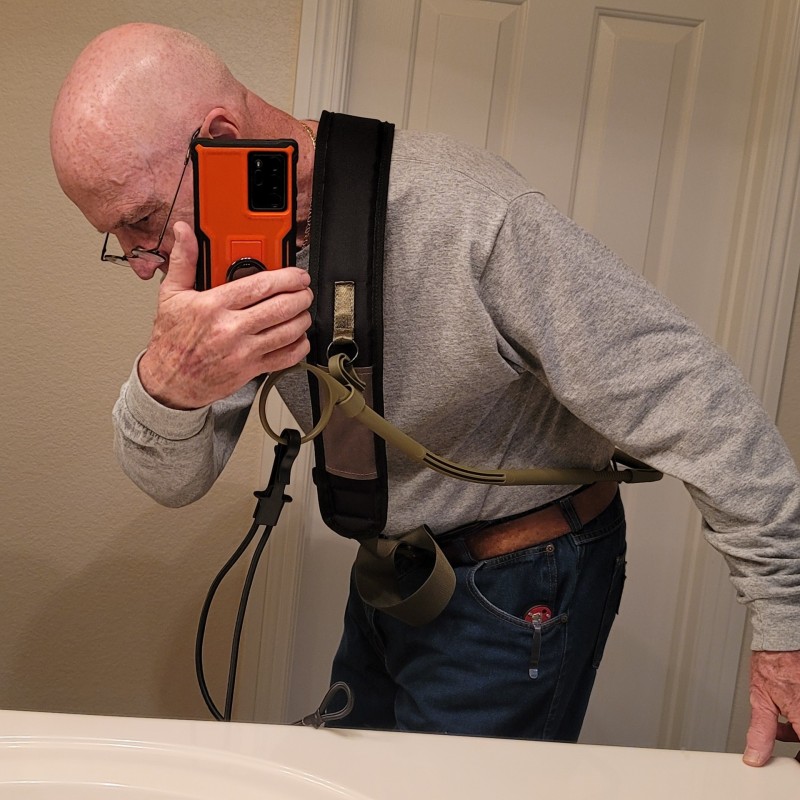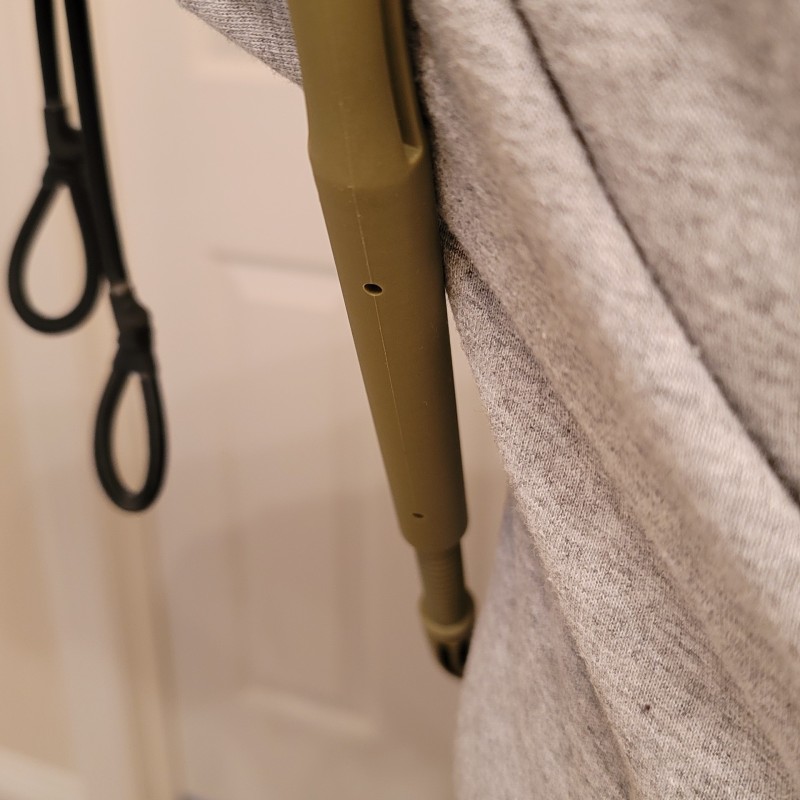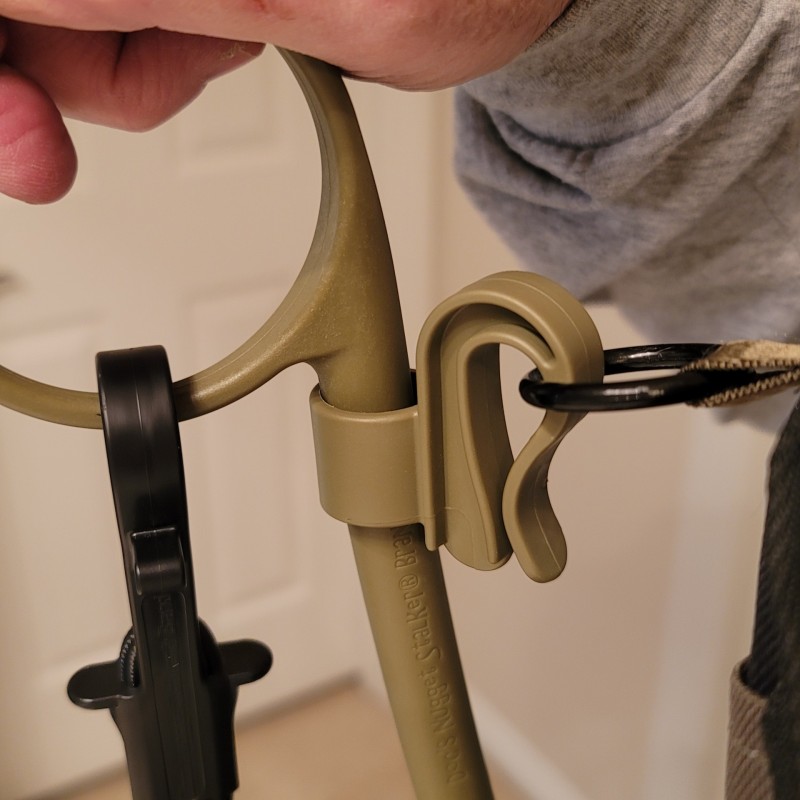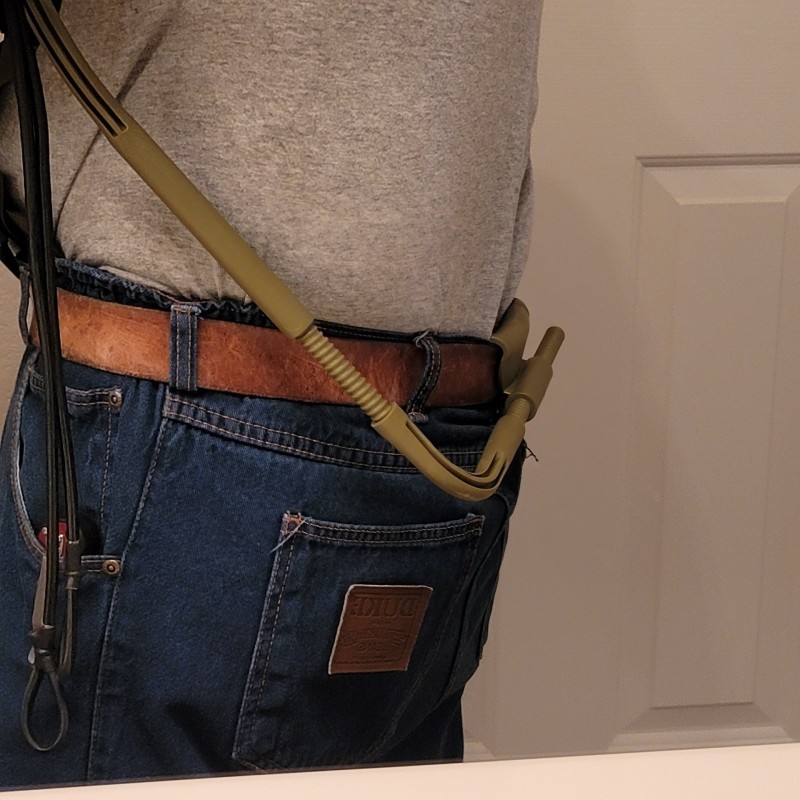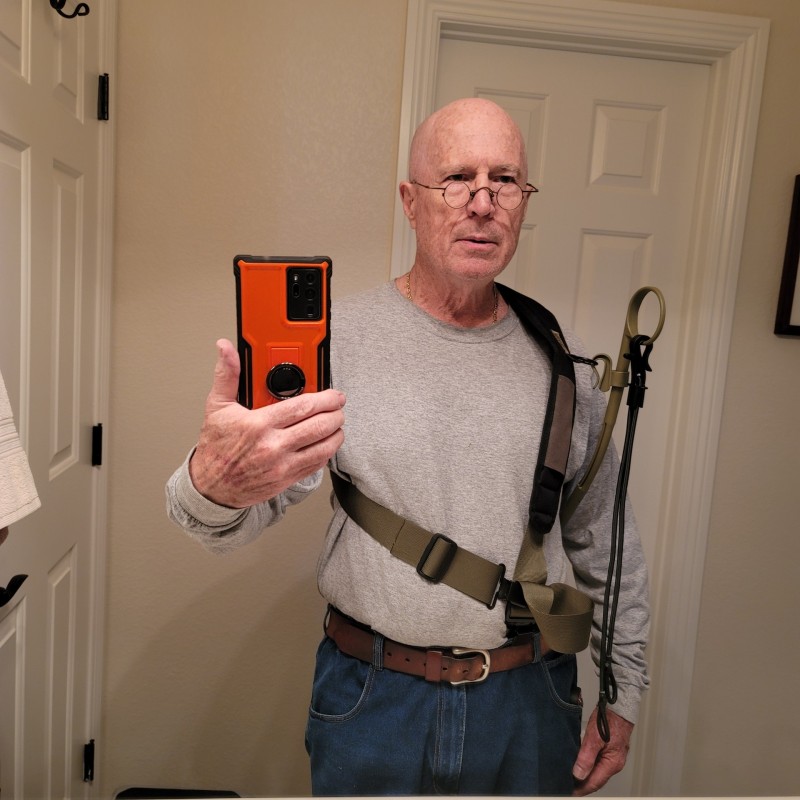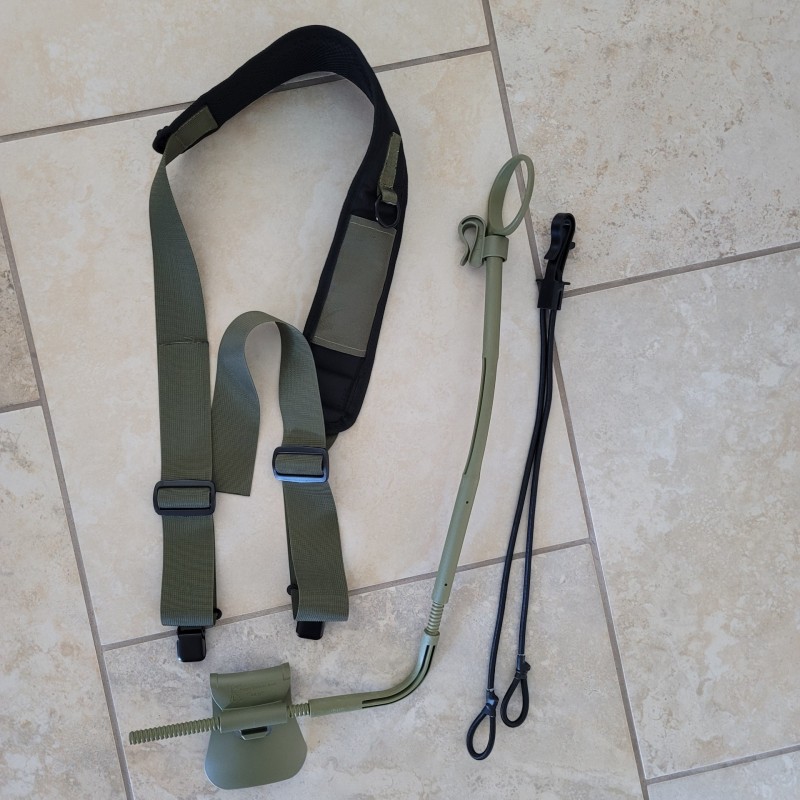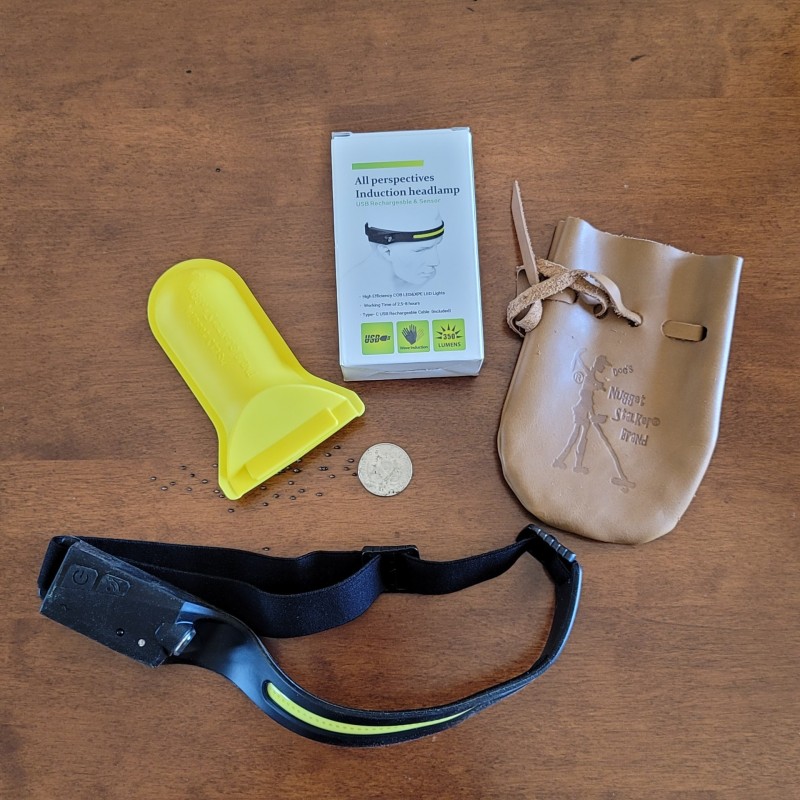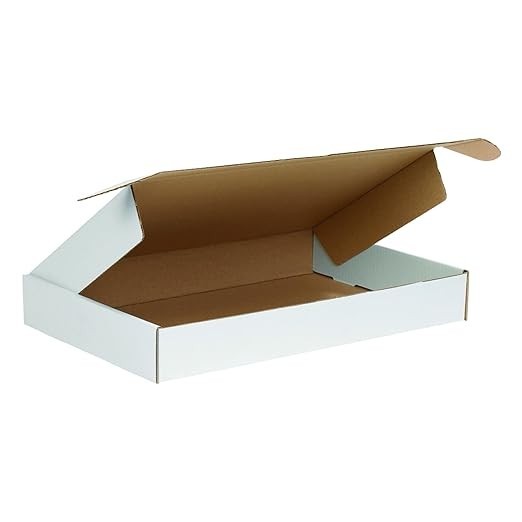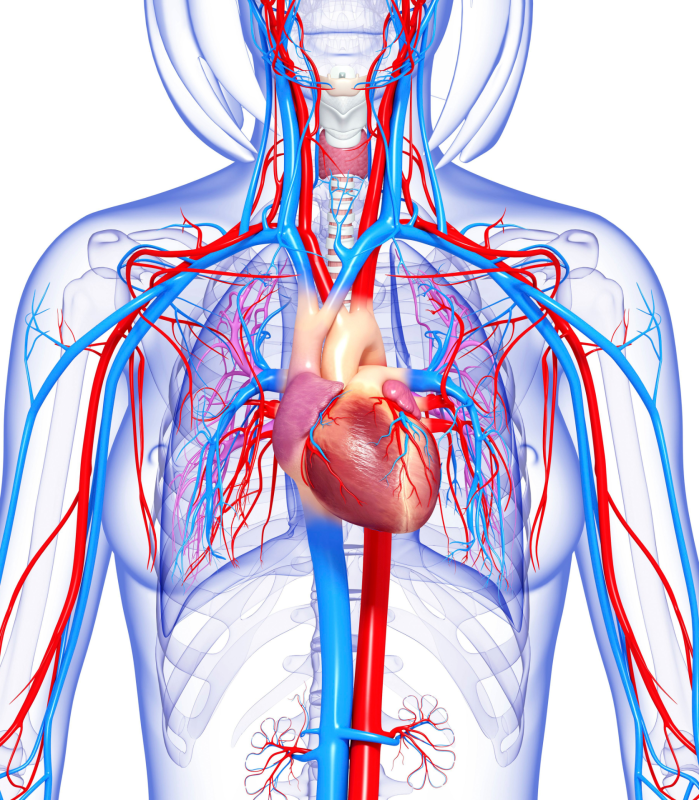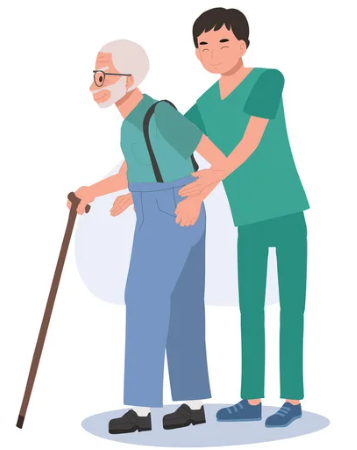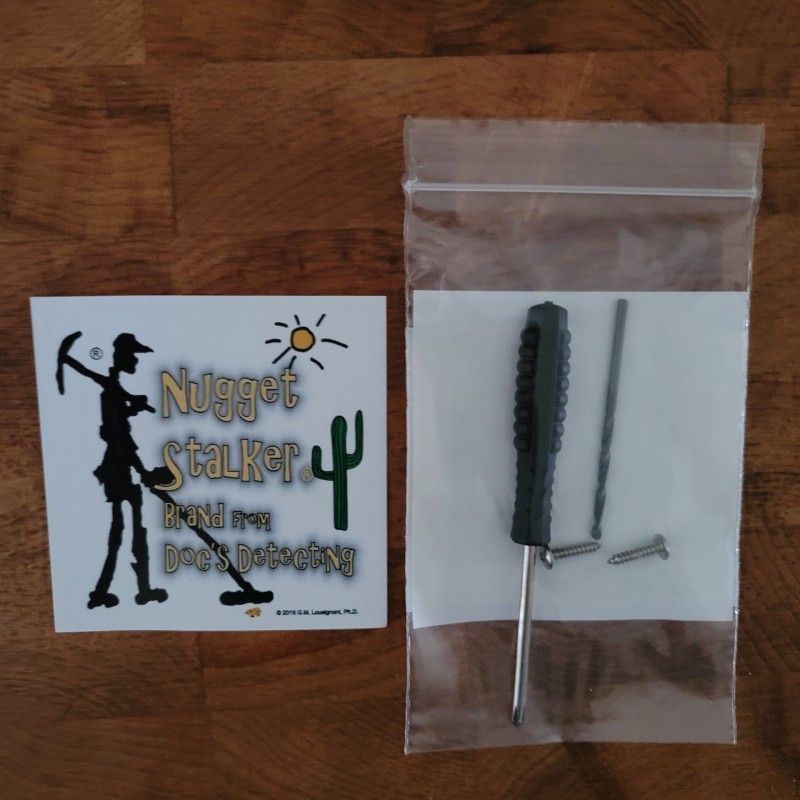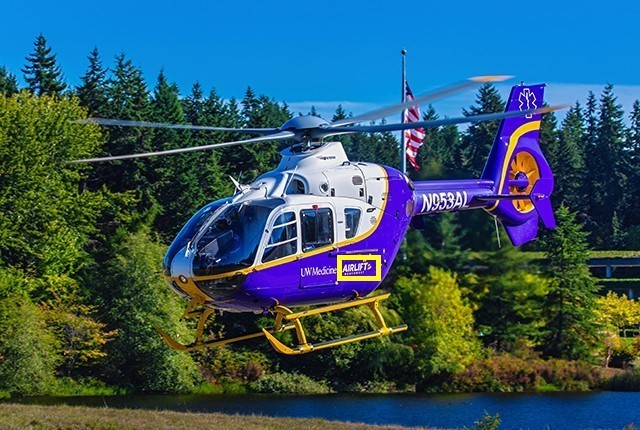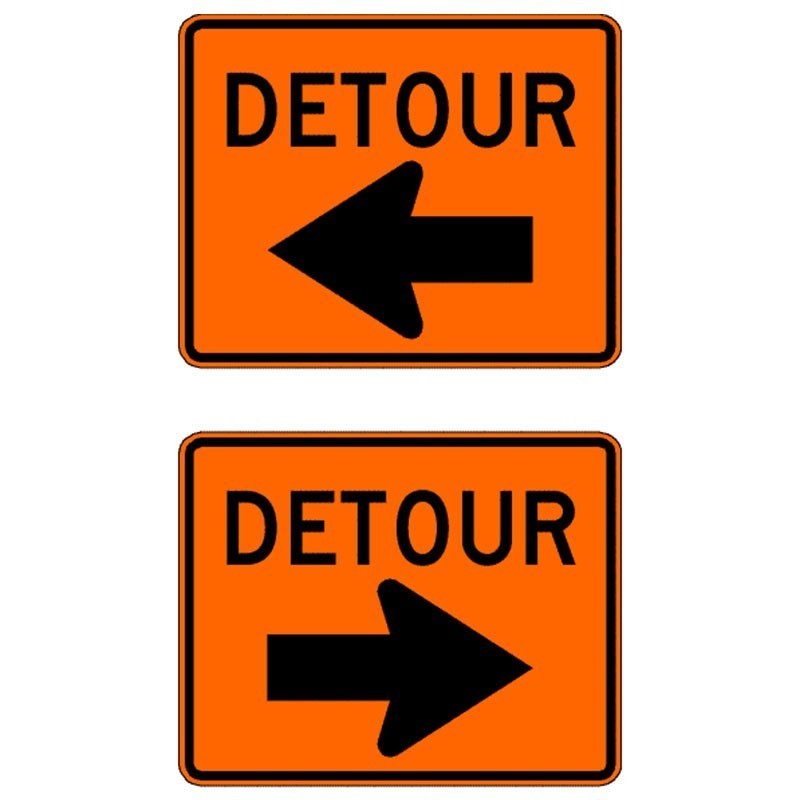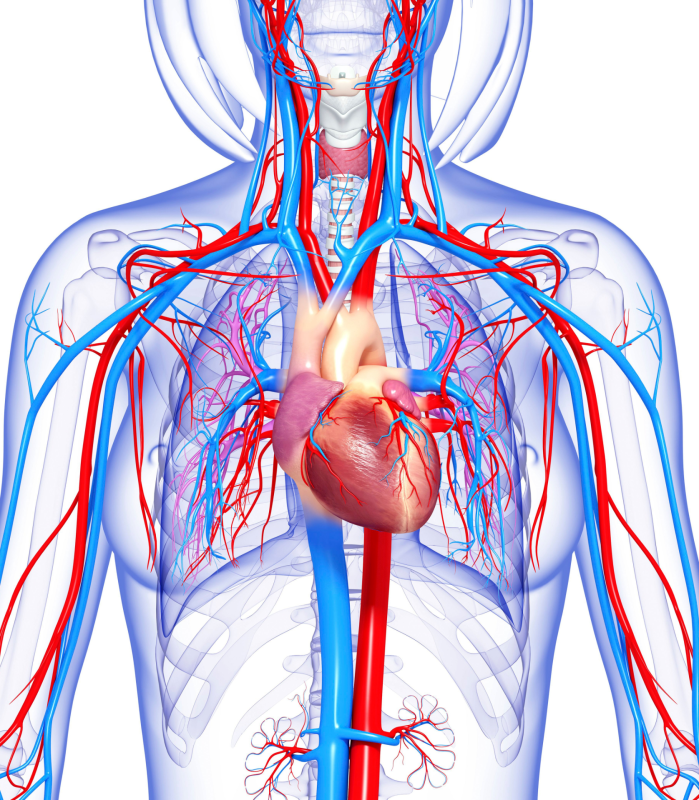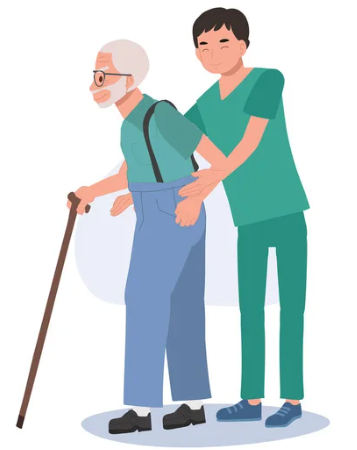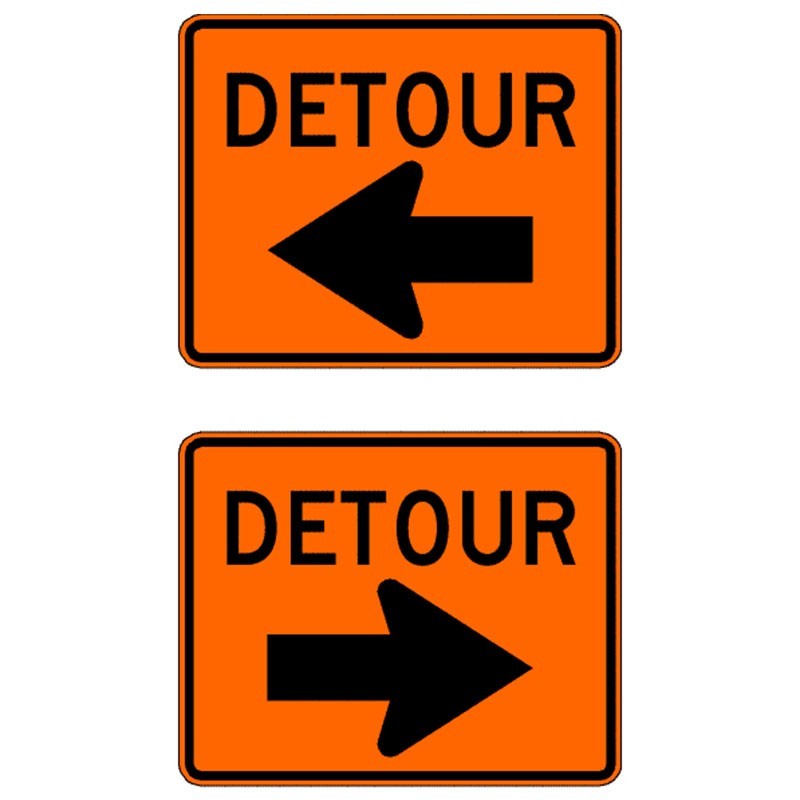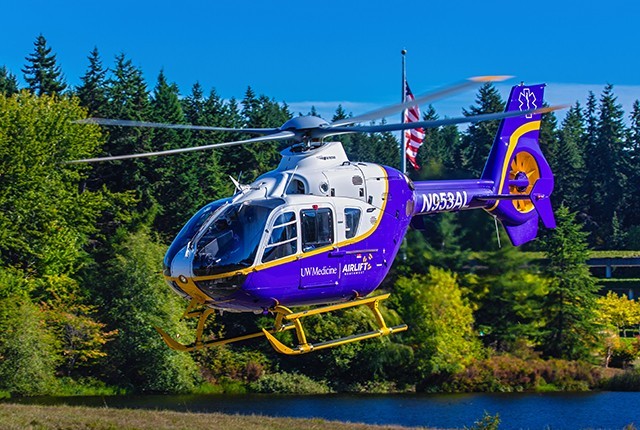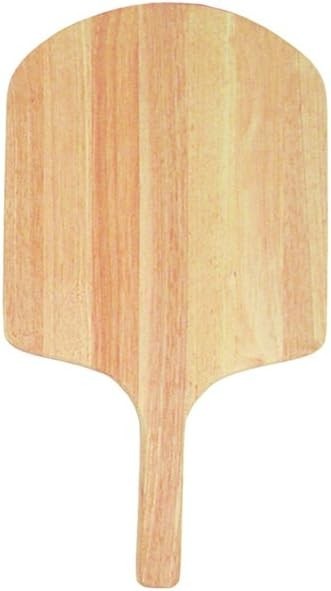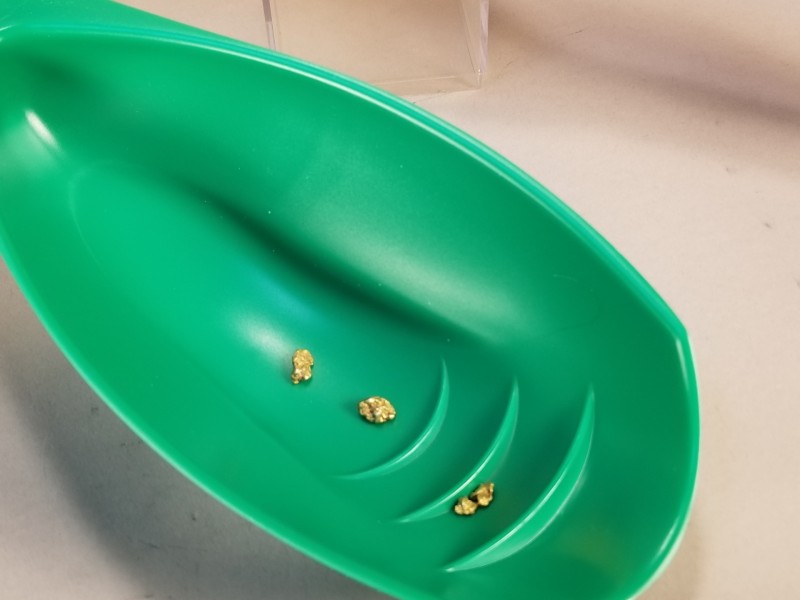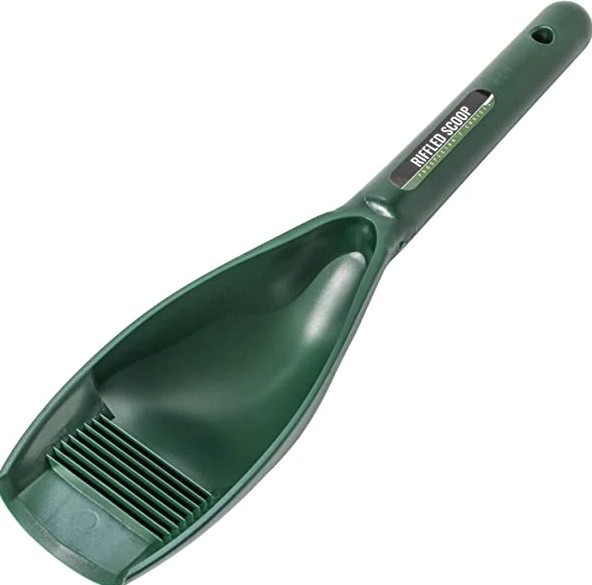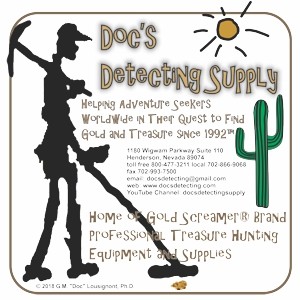
Doc
Full Member-
Posts
374 -
Joined
-
Last visited
Content Type
Forums
Detector Prospector Home
Detector Database
Downloads
Everything posted by Doc
-
Unfortunately I'm not exactly sure. Shipping costs are up, but the big up in the air thing is always import duties. I usually pay 15% on covers imported, then one time they whacked me a 45% tariff. Well that changes retail prices dramatically. So when I can ball park it I will let you know. Thank you, Doc
-
OK, please realize these are prototypes. However, I can tell you aside from the attachment ring in the Upper Strut of the DALAS being too large, this thing is amazing. I wanted to do a video but it is so windy today it would have not been ideal. So let's look at the Detector Air Lift Assist Stick and the OPTIONAL Detector Air Lift Assist Strap. There are four parts aside from the QWIPPLE BUNGEE on the stick. #1 The Paddle, #2 the lower Strut, #3 The upper Strut, #4 The DALASystem Slide Clip. #1 The paddle slips into the waistband in the middle of your back. This has a female thread for you to screw in the lower strut to adjust to your "WIDTH" It is very generous, and if you don't need that much excess simply saw off the excess with a hacksaw. The entire DALAStick is made of Nylon with infused fiber glass for amazing strength. WARNING! - DO NOT try to secure this adjustment with a screw. it needs to be able to move freely front to back. #2 The lower strut screws into the paddle as explained above to give your the width adjustment. I recommend you keep the rod as close to your ribs as comfortable. This way your arm does not bump into it. #3 The upper strut has a female thread that attaches to the male thread on the lower strut to give you a generous height adjustment. This strut has two guide holes so when you find that perfect adjustment you use the provided drill bit, drill a hole approx. 1/4 inch deep through the upper strut into the threaded portion of the lower strut to lock your adjustment in. WARNING!!! Do not drill holes or secure the upper rod in place until you have put the weight of a detector on the upper strut. You need the weight of the detector to show you what the proper height adjustment should be. If you are very short, you may want to saw off some of the upper threaded part of the lower strut. However you can only cut off approximately 1 1/2 inches. The male thread you see showing in the picture is the maximum you can cut off. I recommend you mark all adjustments with a Sharpie so you always know where your width adjustment should be on the paddle. #4. The DALAStick Slide Clip. THIS IS A PICTURE OF THE DALAStick and optional DALAStrap (That ring where the QWIPPLE attaches will be approx. 2 inches in the production units.) You do not have to use the strap, it is available as an optional accessory. The DALAStick will work with your harness rig. I do advise that you may want to mount a ring lower down on your shoulder strap. I'll explain why in a minute. THE FRONT OF THE UPPER STRUT has two guide holes for you to drill and screw in the provided screws to lock in your height adjustment. The lower rod screws into the comfort paddle and can be adjusted for maximum comfort. As I have mentioned before, in order for the weight of your detector to be properly redirected, the movement of the DALAStick can not be impeded in any way. Anything that interferes with the ability of the DALAStick to move freely up and down transfers the weight to whatever is interfering with that movement. That is why it is important that your "D" ring attachment point or "O" ring attachment point is low, so as not to impede the movement of the DALAStick to slide inside the SLIDE CLIP. If the "D" ring is too high the DALAStick SLIDE CLIP will stop at the "D" ring and the weight will be transferred to your shoulder. I have been wearing this around the house for three hours. It's like it's not even there. When you bend over it moves with you because it rotates inside the paddle. Already I can see that the "O" ring and the sleeve on the DALAStrap needs to be lowered and adjusted because it is too high. So it's a process. I went outside and hooked up my GPZ7000. LOL it now weighs nothing. Literally nothing. All that happens is the weight of the detector is transferred to the paddle which pushes your waistband out and away from you. I can tell you, that once you use this, you will not be without it. If you're someone who suffers with arm and neck and back problems; your legs will wear out before your swinging arm. Congratulations to Valens Legacy for using the word STICK in one of his posts. Valens message me your address. Your gifts are a rechargeable headlamp, The New Nugget Stalker® Nugget Stash. And Doc's Nugget Stalker® genuine cowhide nugget pouch. No the quarter is not included it's there as a size reference. Carry on fellow Treasure Hunters. Doc
-
I think you will see the work that went into this and the design that allows the weight to be almost completely ameliorated, via redirection of the weight of the detector. You can use the DALAS (Stick) with any backpack, hydration back, or anything that has a shoulder strap that has a "D" ring or a "D" ring can be sewn on. Yet the DALAS moves completely independent of the "D" ring. The "D" ring only positions the DALAS at the shoulder but the DALAS is free to move up and down in order to transfer the weight down and back to the middle of your back in an efficient matter. Transferring weight to reduce the sense of how heavy something is, it's not a new concept. The problem I see is when you do a direct weight transfer, like the Hip Stick, you do not get the benefit of the sense of reduced weight, because the weight is transferred directly and not re-directed. Second issue is you have to know exactly how long the Hip Stick needs to be. It is not adjustable. If it's too short, the rod pulls on the D ring attached to the shoulder and the weight is not transferred to your waist, it is transferred to your shoulder. The rigid design does interfere with your movement especially when bending over. If it's too high, you have a rigid stick sitting right next to your face. The Hip Stick is certainly a valiant effort at weight transfer and as long as you get it adjusted correctly. It does not however come with any bungee support system like the QWIPPLE. With the DALAS, there are no special belts needed, it attaches to your waist band in the back of your pants. This free movement allows unimpeded weight transfer, eliminates any possibility that the weight will be transferred to the shoulder strap, and it makes it comfortable to bend over and move freely, because the rod moves up and down with your movements instead of being a rigid rod that restricts you range of motion. There is an optional minimalistic strap for people who have nothing to attach the DALAS (Stick) too. It is called the DALAS (Strap) Together they will be referred to as the DALAS (System). Perhaps there are days when you just want to do a quick check of an area and do not want to use "The STICK." The beauty of the DALAS Strap is, it can work totally independently as a Utra-Lite type of Swingy Thingy with the supplied QWIPPLE bungee. Of course DHL who was supposed to deliver yesterday did not have my gate code, Which is weird they deliver here all of the time. So I got up at 6 am to call in and give them the gate code. Now they are telling me maybe today, more likely tomorrow. When you positively absolutely need a package, don't count on DHL. Doc
-
Clue in every post I make. There's a DETECTOR in my signature. First Letter DALAS - D = Detector CLUE #1 These are the parts included to get the DALAS perfectly adjusted to you. Adjust once and you never have to do it again. CLUE #2 The DALAS will fit is a PIZZA Box perfectly in fact that is probably how it will be packaged. CLUE #3 Up the creek without a PADDLE. Any of you that carry a weapon know that a PADDLE holster is extremely comfortable. Why not incorporate that into the design for the DALAS? CLUE#4 The second and third word in the acronym DALAS A and L is AIR LIFT. If you had observed carefully you would have seen the helicopter had the words, AIRLIFT on it. CLUE #5 Detour signs redirect you. What happens when you redirect weight? What happens when you redirect weight like in a block and pully system? The weight becomes barely noticeable. A 500 lb load feels like 5 lbs. CLUE #6 It's Green! Well it is! You will see tomorrow when I have pictures. Clue #7 A young man attempting to ASSIST an old man who is using a STICK, (cane) and wearing a STRAP. The second "A" DAL -A- S stand for ASSIST. CLUE #8 Is a Circulatory SYSTEM. The final letter in DALAS, has multiple meanings. SYSTEM. STICK, and STRAP. CLUE #9 STRUT. The DALAS, among other things consists of a PADDLE and two STRUTS. SO let's look at the history of how people have tried to make metal detecting more comfortable and enjoyable. I don't care how much research you have done, how many detectors you own, what detector you own, all of that means nothing if you get fatigued while swinging your detector. Fatigue is the biggest detriment to finding goodies. I don't care if your detector weighs 2 pounds or 20, when you start to feel the effects of detecting in your neck, arms, back, you lose focus. When you lose focus you lose focus you lose concentration. When fatigue sets in, your gold take drops precipitously. So let's start with Minelab back in the days of the SD2000 SD2100 SD2200. They gave you a little bitty bungee cord, with no ability to adjust the cord, you were just supposed to tie it to the detector, attach it to the backpack carrying a 5 b battery, and off you go. Next of the horizon was the ol' Swingy Thingy that I developed. It actually allowed you to adjust the length of the bungee at the rod, so changing terrain was no longer a challenge for you to instantly adjust your bungee. Next came the Hip Stick, a very popular item. Some folks absolutely love it and some people are lukewarm about it, but it never seemed to catch on here in the U.S. while in Australia thanks to Jonathan Porter who made some important modification to the design it is very popular. Next came an upgrade to the Swingy Thingy from yours truly, the Ultra Swingy. A dual strap padded version with the QWEEGLE Bungee which allowed you to adjust at the rod and also at the shoulder "D" ring. Then some attempt was made in Australia for an over the shoulder "Sky Hook" device to hold the detector up. Alas it was cumbersome, and it had a lot of bounce to it as the over the shoulder device was a piece of bent metal which flexed under the weight of the detector. Next Minelab introduced the Pro Swing, which in my mind was actually sort of a hybrid of the Ultra Swingy Thingy and the Hip Stick. Minelab did some very interesting things with the Pro-Swing, instead of direct weight transfer, like the hip stick, they redirected the weight which made the weight of a detector even less noticeable. HOWEVER, while the concept was fantastic, the execution left a lot to be desired in the mind of users. There had to be some modifications done that many people were not willing to make. People complained that it was too confining and made them feel claustrophobic, they couldn't get it adjusted right, and it kept coming apart. On top of all of those complaints, users said they didn't feel it really took the weight off as much as they would have liked it too. Also it didn't work on every detector. Personally I love the Pro-Swing but I had to do several modifications including how it is worn to make it work as it should. I have written before about how to simply modify the Pro-Swing to make it worked as designed. I would be happy to share those tips with you and I guarantee you will love the Pro-Swing. So for four years I have mulled this concept of a device to make a detector float like a feather, but I know you guys and you have many requirements that need to be met before you would consider using such a device. I worked very hard on making sure the DALAS™ checks all of those boxes. I hope you will agree I resolved all of those things that needed to be resolved. The new QWIPPLE ambidextrous triple point adjustment bungee was my first big step in this project. So here is the manifesto I wrote to myself that gave me the mandate to invent the DALAS™. Common Metal Detector Support Devices, what they attempt to do. • Claim to redirect weight to alleviate stress on arms, shoulders and neck. • They attempt to do this by redirecting the weight to a larger area of the body, usually the waist. Why Common Metal Detector Support Devices fall short of their intended purpose. • Some units are too bulky and constricting. • Some systems attempt to mitigate the weight by directly transferring the weight to your waist without re-directing the weight. This means you have to wear a tight belt to keep your pants up. • You have to select a fixed size with no ability to adjust the length if it is not perfect. • Some adjustable systems do not give you enough of an adjustment and are too short to function properly. • Some adjustable systems pull apart even when they are adjusted to the longest adjustment. • Some systems require an adjustment to switch for right hand to left hand use, which is not secure and tends to come apart when used. • Most systems are designed to attach to the “D” ring of your harness or are dependent on being fixed to the harness “D” ring in some way. If you are unable to adjust the device to the perfect length, the system pulls on the “D” ring. This then transfers the weight to your shoulder instead of your waist. This completely defeats the purpose of the proposed advantage of the system which is to transfer weight to stronger less injury prone body areas. • Some “Over the Shoulder” devices are so large, heavy and cumbersome, most users find them unusable. In addition to which the “Over the Shoulder” device puts the bent metal support strut with “D” ring over your shoulder and right next to the side of your face. Not only is this distracting, but it could cause serious injury and a severe laceration if you were to fall and your face landed on that metal support strut. • Some systems do not come with a fully adjustable bungee cord or any bungee cord at all. How should the perfect Metal Detector Weight Support Device be Designed? 1. Unit should be easy to wear. It should be lite weight, minimally intrusive, and not make the user hot. It should be able to be used with the users favorite backpack, or hydration pack without additional straps of any kind if they are not needed. The device should compliment the user's rig instead of trying to be an additional harness that has to be added. 2. Unit should truly “REDIRECT” the weight NOT just transfer the weight “DIRECTLY”, so it is unnoticeable and very comfortable. Unit should be custom designed from concept to execution using parts specifically made for the intent of the support device. Using parts made for other purposes that are "jerry rigged" to adapt to the proposed use never achieves the ultimate design goals. 3. Unit should be fully adjustable for all size individuals without compromise, for a perfect fit. 4. System should be firmly secured at any joints or areas of adjustment to prevent the unit from coming apart when being used. 5. System should be easily adjustable for right handed or left handed use, with the adjustment point being totally immune to separating when in use. 6. Support device should be completely able to move freely even when attached to a harness or “D” ring. It should move independently. There should be no impediments to unrestricted movement from the point of ORIGIN, where the weight of the bungee with the detector is attached to the “D” ring and where the weight is redirected to an unnoticeable area of the body where the weight redirection is TERMINATED. This design should prohibit the device from ever pulling down on the harness and transferring the weight onto the shoulder, neck, upper arms, or any part of the body other than the weight redirection termination point of the support device. 7. Support System should not pose a significant risk to the user. System should not be made of metal. They should be free of sharp edges. It should not be necessary to wear the system close to the side of your head. Direct weight transfer systems using a strait support rod should be avoided. If the weight is directed straight down. In a fall the force of the fall could drive the rod straight up causing injury to the user. 8. Support System should come with a fully instantaneous “On the Move” adjustable bungee support rig with multiple ways to adjust your detector to the perfect height. Bungee should be adjustable at the attachment point of the detector rod and at the shoulder clip and be ambidextrous. Bungee cord should be of superior material, Dacron Polyester UV protected Marine Grade with a 50% stretch. Either end on the bungee should be able to be attached to the detector. The bungee cord should be easily detached or reattached with one hand to either the “D” ring of the Weight Support Device, or to the attachment device on the metal detector rod. Introducing Doc’s Nugget Stalker® Brand The DALAS™ • Detector Air Lift Assist System Features 1 through 8 listed above! CHECK! Tomorrow pictures of the first prototype. Thank you for all of your support! Doc
-
Using The 7000 To Pick Up The Scraps Missed By The 6000
Doc replied to Lesgold's topic in Detector Prospector Forum
Everyone is all over the moon about the GPX6000. I know it has it's place, but not when you put it up against the Zed. I have not given up on the GPZ7000 yet and I doubt I ever will unless they make it lighter. I have found all size of gold at all kinds of depth and it never fails to amaze me. 1/10th of a gram at 9 inches, another at an absolute 8 inches. I was taking only a 1/4 inch of soil off at a time because I didn't believe the first 1/10th was actually at 9 inches. I figured it had fallen deeper in the hole as I dug. So when I got a second target 2 feet away I thought I'm going to go really slow so I know exactly what kind of depth. Another was a 2.1 gram nugget at 21 inches in a crack in bedrock. So yeah, the GPZ7000 is still my machine, but you have to know how to make that detector float like a feather. Doc -
Nevada Nugget Hunting With Garrett Axiom
Doc replied to Steve Herschbach's topic in Detector Prospector Forum
When he said 2 grams, I said to my wife, no way is that 2 grams it's 4 to 5 grams. I hope he lets us know how much it weighs. And thankfully he did. Doc -
Nevada Nugget Hunting With Garrett Axiom
Doc replied to Steve Herschbach's topic in Detector Prospector Forum
Great video, thanks for sharing. Doc -
While I understand funds are not unlimited. Here is something to consider. It's price vs. cost. Now you may not have the $400 price or whatever someone charges for a day or three of training. However, when you start detecting for gold and don't have the knowledge that a day or three of training will give you. The cost is going to be staggering. I once ran into a person metal detecting for gold. I came up over a ridge with my ATV and there was a person just halfway down a small gully. I stopped said hi, and we exchanged some pleasantries. The person said, I'm just going to finish this last 30 yards and then I've got another place I want to go. He too had an ATV sitting at the foot of the gully. He said I can save you some time though, I haven't found anything in this gully, not even trash. I said "No worries." And I acted like I was looking through my storage container on the back of my ATV. Actually I was watching this man finish the rest of the gully as I thought to myself. "Well partner if there were any gold there you would have never found it." All he was doing was detecting the bottom of the gully. Not the edges of where the bottom of the ridge met the gully, not behind the bushes that lined the gully, he didn't roll any boulders over and detect under them. And his coil was about 8 inches off of the deck. Apparently he didn't want to get his coil dirty. This man was giving a training lesson on how to do everything wrong. He could have written a book called, "The Secret Key to No Gold, No Treasure, No Holes Metal Detecting" by NADA KLU. He waved goodbye and drove off. I got my metal detector off the ATV and I swear as God is my judge as I am walking down to the gully I get a target behind a bush, a 1 gram nugget. I get into the gully and I hit another 1 grammer 15 feet down from the first about 12 inches out of the gully. Half way down the gully there is a bunch of broken quartz about 4 feet out of the gully on a small flat bench. There are a couple of boulders that I roll off the bench and I find a 4 gram nugget! 4 grams! I thought for sure it was a bullet. I head down to the foot of the gully and right in the middle of the gully about 3 feet from where it emptied into the wash, where the other prospector's ATV was parked, another large signal. A two gram nugget 6 inches down smack dab in the middle, a child could have found it with a toy detector. But not this guy! Because about 15 feet before he got to the foot of the gulley, where his ATV was parked, he was busy turning off his detector and waving goodbye to me. I ended by checking all the sides of that gully and found 5 more little dinks. totally close to a gram. OK so I know without a doubt this person never had any training, so he saved the $400 of the PRICE of a training class. Now being he was not trained and didn't have a clue, the COST of not being trained was approximately 9 grams of gold. Or at today's gold prices approximately $635, and that was for just 1 gully and about 40 minutes of detecting. I spent over 5 hours working that gully and everything that fed into it. So INVEST in yourself, because the payoff will be well worth it. Call Gerry at Gerry's detectors. He has one of the best training crews around and he is a Marine, so he will BOOT CAMP your butt and make you find gold. You will never be sorry! Doc
-
CLUE #7 Gang thank you for playing along. I will be putting you out of your misery in a couple of days as I should have the first proto-types in my hands then. I will give a detailed explanation. Of course I encourage your input. I can tell you right now that I have over $11,000 in development costs so far. This has not been an inexpensive undertaking. But as usual my goal is to bring you innovative helpful products and accessories that will assist you in being more successful in your detecting endeavors. I also have decided that my future development endeavors need to be aimed at more generic accessories. In other words things that appeal to all detectorists using any detector, or prospectors and treasure hunters in general. For example, I love developing great covers for metal detectors. But when you spend a ton of money developing a cover for a GPX6000 or a Garrett AXIOM, you are playing to a very limited audience because not everyone owns those machines. Take for example the GSpot and GPit Scoops. They have very wide appeal and the demand for these items show how popular a generic item can be. Thank you guys for playing along. Truly this has been very entertaining. You made me laugh out loud several times. And one of you said the magic word and there will be a reward for your efforts. I will reveal the winner when I unveil the DALAS. Also thank you for making Doc's Nugget Stalker® Brand so popular. Doc P.S. I'm looking at this cartoon a little longer and obviously the DALAS has something to do with making it easier to pick the pockets of old people. 😁
-
Tracking: 9400111206210391483748
-
Sorry, it was a typo, Just talked to Frank and confirmed he's still at 3325. Thank you, Doc
-
Mike do you know if Frank still lives at 3335? Doc
-
Well it would not be the first time I botched something. The SAGA Guide Arm was an example. That was an absolute FUBAR the first go around. Fortunately I only had about 10 prototypes that I put out for testing and we learned real quick that they were under engineered. That led to a vastly superior product that people absolutely love. Doc
-
GotAU, Yes I developed the Phase II Profile Work Ethics Profile in 1977. It had patents in the U.S. and in Canada. I still have over 880 clients that use my profiles around the world. As you probably know I have a Ph.D. in Criminal Psychology with a minor in Industrial and Organizational Psychology. I have developed other profiles that are widely used as well. I have one client who used over 26,000 of my Sales Success Profiles last year. They have been a client for over 20 years. In fact my average client has been using my employment tests for 23 years. You didn't really think I make money selling metal detecting accessories do you? LOL I have a nice income from my testing business. It's all intellectual property with proprietary scoring algorithms based on statistics gathered from literally millions of tests. My profiles are very unique because the scoring algorithms are based on Validity and Reliability. Unlike typical tests where there are right and wrong answers. My algorithms are based on how valid and how reliable each question is at predicting whatever behavior you are trying to measure. So each question is weighted differently. In fact some answers give you points, and some answers take points away based on how valid and reliable they are. So one answer may give you 1.83 points, another may deduct 2.17 points. Validity refers to how valid a question is in predicting what you are trying to measure. Reliability refers to how consistently that question predicts whatever behavior it is you are trying to measure. So lets take this question for example. I have murdered someone in cold blood. TRUE or FALSE. If someone answers that question TRUE, it is 100% statistically valid in predicting whether someone is a murderer. (Maybe less if someone is just jerking the test around.) If they answer FALSE, the validity sucks because killers will lie. Now as far as Reliability goes, TRUE answers are always reliable, everyone who answers TRUE in all likelihood is a killer, or they are stupid and can't read. So reliably people who answer TRUE are killers, but reliability refers to if they take the same test a year later, will they still answer TRUE? In other words reliability refers to how consistently the same person would answer that question over time. Interesting note: The Phase II Profile, (Work Ethics General Honesty) is scored on a basis of 200 points. 148 and above is acceptable. 139 to 147 is questionable. Below 139 unacceptable. We gave the test to 60 some convicted felons involved in some crime involving theft. Armed robbery, grand larceny, embezzlement, car theft, etc. We told them if they could pass with at least a 139 we would add $25 to their commissary account. We told them to do the best they could but remember there is a "FAKED GOOD" scale which will invalidate the test if the test senses they are lying to make themselves look good. A FAKED GOOD score of 8 or less on a 10 point scale automatically fails them. NOT ONE, was able to pass, and the average score was -14. MINUS 14! With that income from my test business I am able to develop new and exciting metal detecting accessories. It's sort of my hobby. I love inventing things. I just had no idea so many customers would love the things I invent. Thank you from the bottom of my heart. So, doing patents is a very expensive process. AND, it's almost senseless. All someone has to do is change some aspect of what you invented and the $25,000 you spent on your patent is useless. OR they claim they reverse engineered it. "Patent Applied" for means nothing. In order for you to prosecute the patent and answer all of the questions and challenges from the patent office is exhausting and costly. My tact is to create something very unique and well thought out. Spare no expense in development and have it manufactured in the tens of thousands, to get the price down so low, there is no incentive for someone to rip me off. And if they do, it's never as good. Also I do not use "off the shelf" stuff to try and Jerry Rig some new product. If it's worth doing it's worth doing right and having it made from scratch to my exact specifications so there is no compromising on quality. I do think 3D printing has been a great advancement for the inventor because now they can actually create new and innovative customized things and make their ideas come to life. Look at the support ears for the Equinox Coils. Great idea that helped many folks prevent the coil ears from breaking or repairing ears that had already broke. That's why I own over 3 freaking miles of bungee. Because I wanted it to my exact specifications and 3 miles was the minimum order for customized Bungee with 50% stretch UV Dacron Polyester sheath. I created the GSpot scoop which has been wildly popular and successful. $14.95. Sona, a Chinese company that manufactures very inexpensive gold prospecting equipment, decided to come out with their version, retail $14. See pictures. The SONA Scoop is great if you like to fill the riffles up with small rocks and debris and spend your time digging out the crud. This is what happens when someone who is not a prospector tries to rip off a great idea but does it so poorly, that it increases your sales. THE TYPE OF PIZZA IS AMAZING! While the DALAS™ is AMAZING that is not what the clue PIZZA refers to. Sorry for the long run on, but this is how my mind works, a million miles a second going in 40 different directions all at once. Doc
-
Frank, Do you still live at 3325? Keep an eye out in your mail box. I have something I know JB would want you to have to go with that certificate. Doc
-
I've Been Looking Through My Old Pictures Again, Some Made Me Cry...
Doc replied to Doc's topic in Detector Prospector Forum
All they have to do to make a splash is repackage the GPZ7000 in a form factor like the GPX6000 make it lite, and add discrimination. They do that and Ebay will have a glut of used GPZ7000's up for sale. Doc

